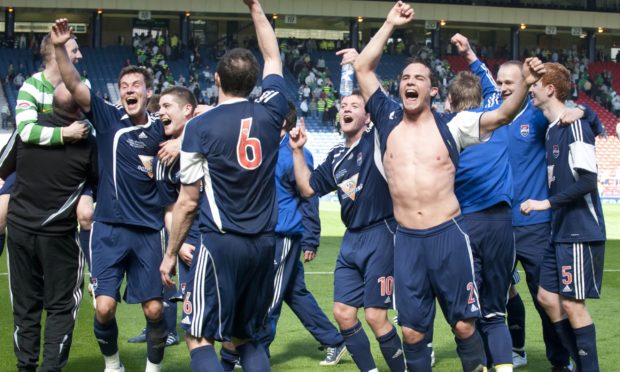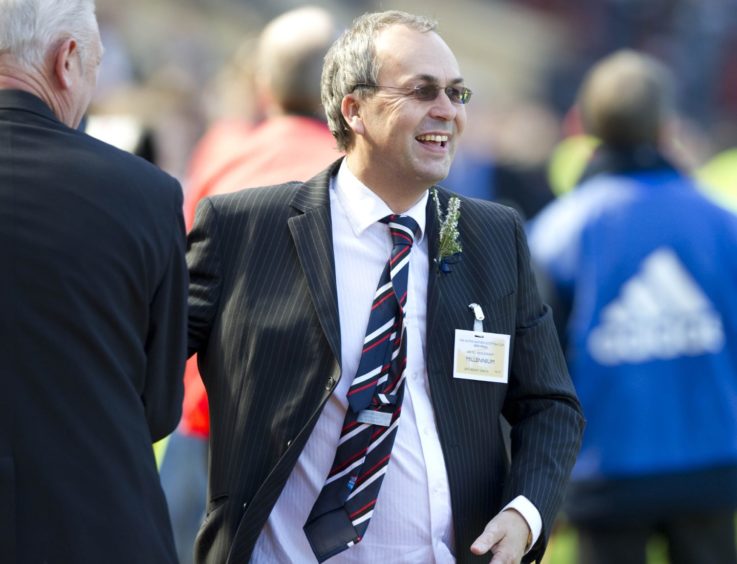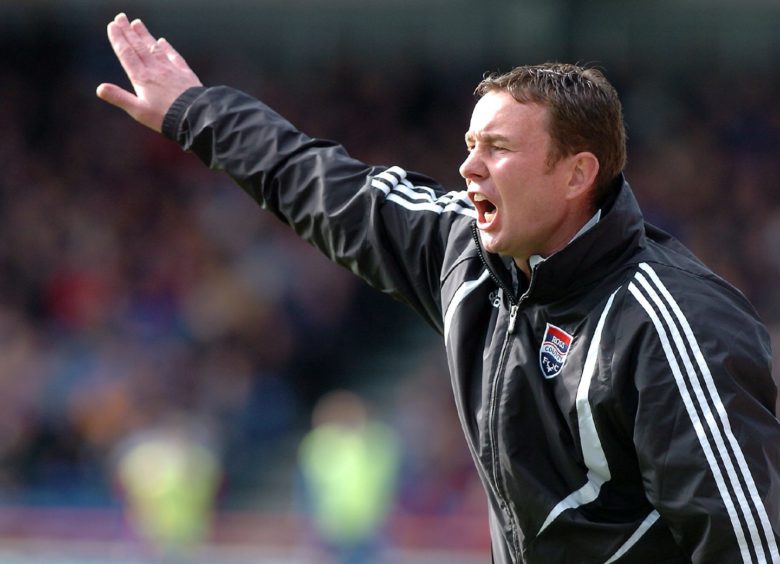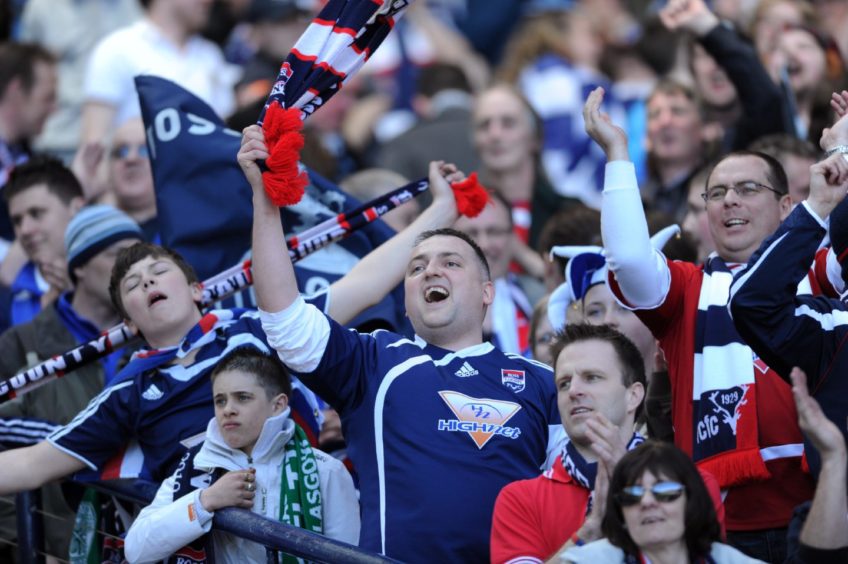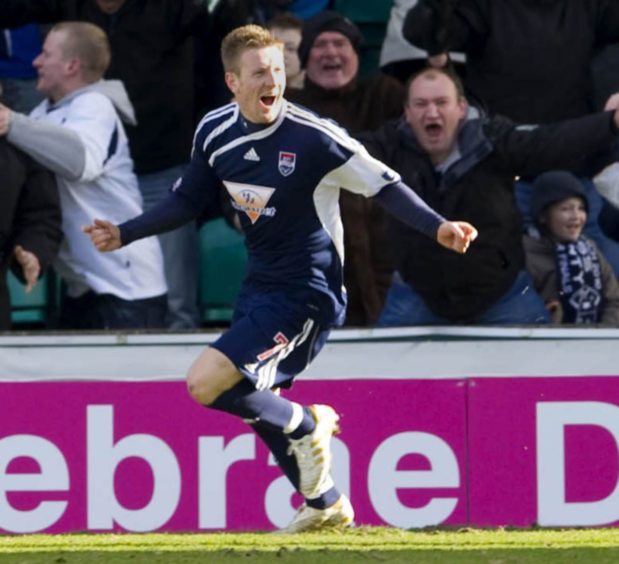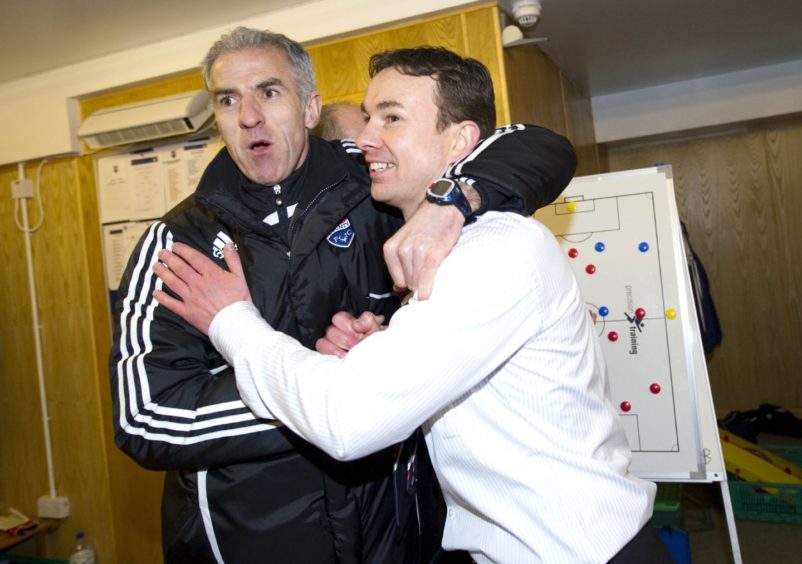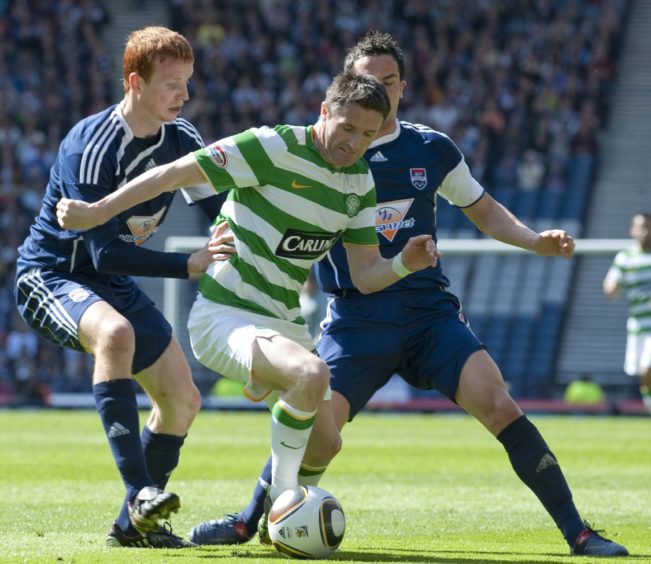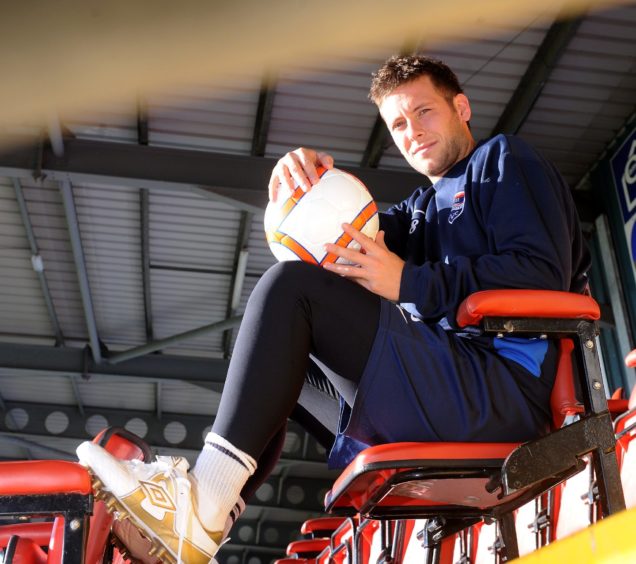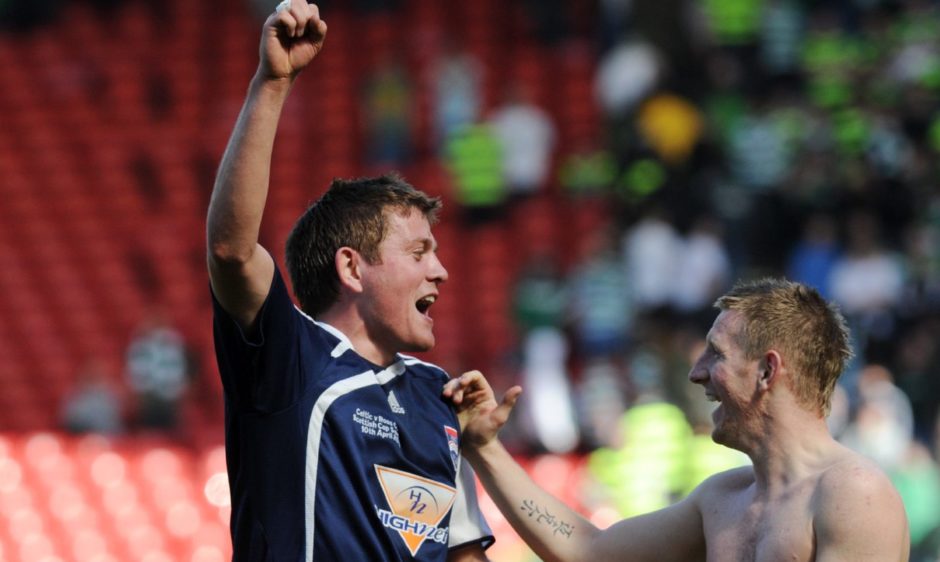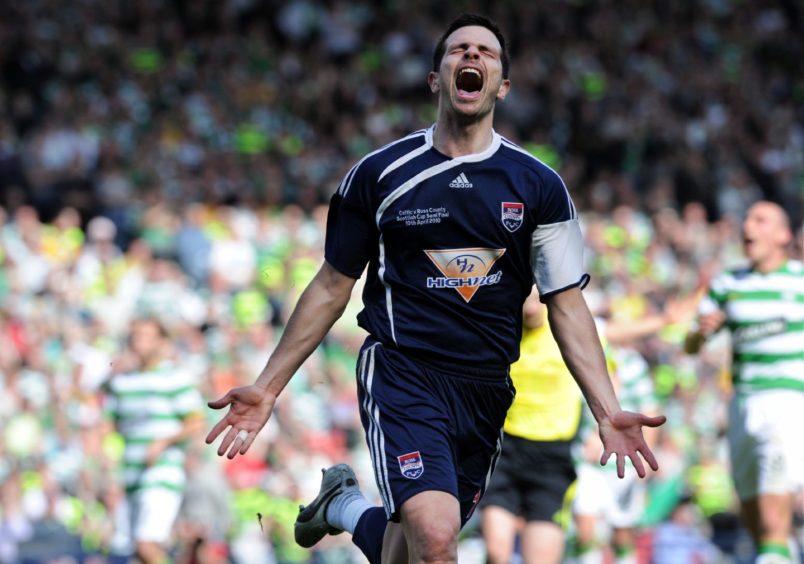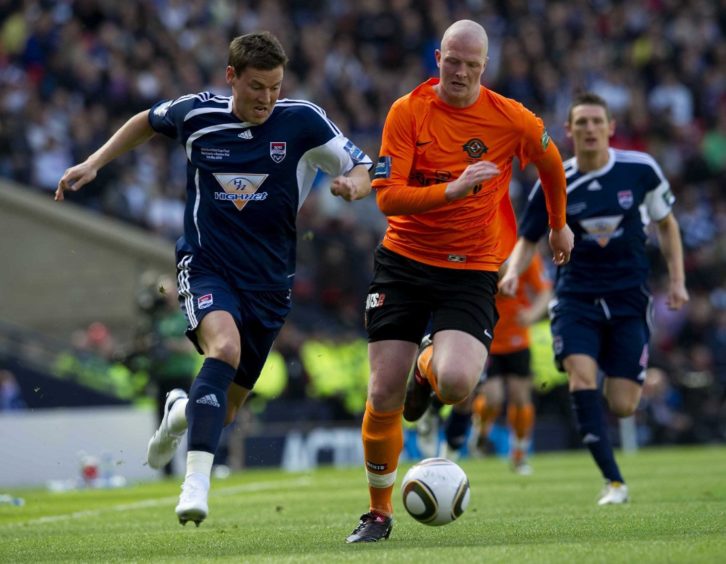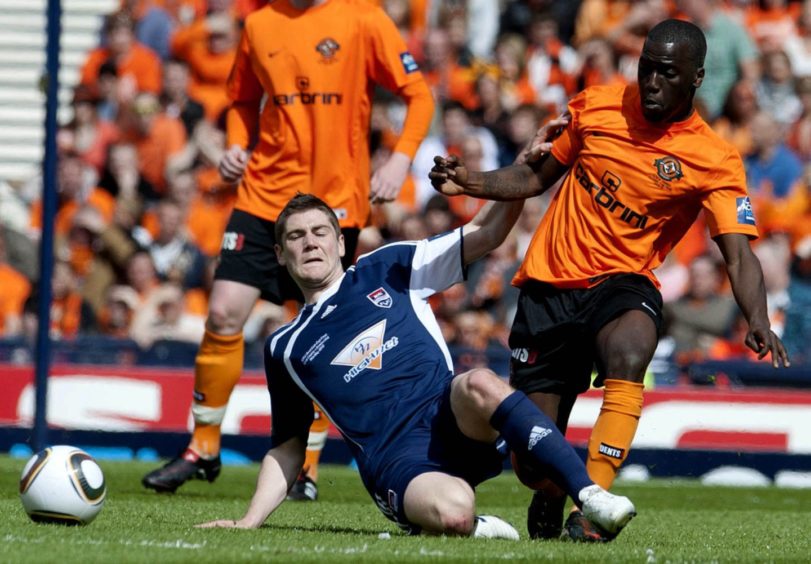If Ross County’s players need any inspiration as they attempt to escape the relegation play-off tomorrow, they can always hark back to the club’s class of 2010.
It was 11 years ago today the Staggies appeared in the Scottish Cup final for the one and only time.
May 15, 2010 ultimately ended in disappointment for the near 20,000 County fans who descended on Hampden Park.
A long-range David Goodwillie strike and a Craig Conway double propelled Dundee United to glory.
But the journey to Hampden was littered with memorable moments.
Moments which key figures at the club believe helped get the club to where they are today.
In chairman Roy MacGregor’s eyes, the foundations for County’s promotion to the top flight in 2012 and League Cup triumph in 2016 were forged during a magical run in the spring of 2010.
“That was the journey that made us a Premier League club,” he said. “As Highlanders we tend to be humble and not shout too much about ourselves.
“But this lifted the bar in terms of thinking about what could happen. It fuelled a frenzy and the final was like a Highland wedding.
“Buses full of mums, dads, granddad, granny, ex-pats, it told me a lot about the potential of Ross County.”
The early rounds
Under manager Derek Adams, the Staggies were on the up in 2009-10.
After winning promotion back to the First Division in 2008, the club consolidated their place in Scotland’s second tier in 2008-09 and were quietly confident heading into the new campaign.
A pair of derby victories over freshly-relegated Caley Thistle had the Staggies among the title challengers in the first half of the season.
Had the club not embarked on an energy-sapping seven-match run to the final, could they have mounted a stronger title challenge?
In the eyes of County’s class of 2010, undoubtedly.
As it turned out, a favourable draw through the first three rounds put the Staggies into their first-ever Scottish Cup quarter-final.
Berwick Rangers were their first victims, falling 5-1 in Dingwall in the third round.
A 4-0 triumph over Highland League Inverurie Locos followed before the Staggies thumped Stirling 9-0.
They were all matches Derek Adams would have expected to win, but the manner of the Stirling result was particularly impressive.
This was a team who ended up winning the division below that same season.
That set up a trip to play Hibs at Easter Road and, in the eyes of most pundits, certain defeat.
‘You are battering us’
In March 2010, Hibs were bossed by a now familiar face.
Goals from Colin Nish and Riordan – either side of an Ian Murray own goal – had Hibs in front heading into the late stages.
A late equaliser from Michael Gardyne sent the tie to a replay and, back under the lights at Victoria Park, the Staggies had every reason to be confident.
Gardyne, who is still a key part of the current team and now holds club records for most appearances and goals, said: “We really fancied our chances in the replay. We knew it was somewhere they wouldn’t want to come midweek.
“I remember Colin Nish saying to me during the game that we were absolutely battering them, that was nice to hear.”
Stokes had Hibs in front just after half-time, but a dramatic equaliser from substitute Garry Wood set the game up for a grandstand finish.
With extra-time looking certain, Staggies stalwart Scott Boyd bundled home a Richie Brittain corner to spark wild scenes of celebration.
Full of belief
County’s reward for their upset win over Hibs was a trip to Hampden Park to take on Celtic.
The Glasgow club were in a period of transition having recently sacked manager Tony Mowbray.
That said, interim boss Neil Lennon still had players like Robbie Keane, Aiden McGeady and Scott Brown to choose from.
Keane, on loan from Spurs, was reportedly taking home around £65,000 a week at the time.
Few people expected the Staggies to pose the Glasgow giants any problems.
Apart from the County players and staff themselves, it seems.
Paul Lawson, who featured 190 times across six years with the Dingwall club between 2007 and 2013, said: “Credit to Derek Adams, he was full of belief beforehand.
“We used to have a guy called Stuart Millar who did reports on the opposition. It’d be ‘he’s not good at this, we could do this to them.’
“The Celtic report was no different. It was all about what they couldn’t do and how, if we stuck to our gameplan, we’d be fine.”
‘Every single one of us excelled ourselves’
As it happened, County were more than fine.
Not only did they beat Celtic, they were full value for their 2-0 win.
Roy MacGregor recalled looking into the players’ eyes before kick-off and being surprised to see how calm they were.
Leading from the front with that attitude was captain Richie Brittain.
“There was no pressure on us whatsoever,” said Brittain, who enjoyed seven seasons with the Staggies and is now the club’s assistant manager.
“I remember us being incredibly relaxed. The press already had Celtic in the final, we were cannon fodder who were just to turn up and play second fiddle.
“But we knew we had a chance and every single one of us excelled ourselves.”
‘Ross County are living the dream’
A bone-crunching challenge from Staggies stopper Alex Keddie on Celtic midfielder Landry N’Guemo in the opening minute set the tone and the Dingwall men grew in confidence from there.
After a goalless first half, Derek Adams’ message to his players at the interval was simple: keep believing in yourselves.
With 55 minutes on the clock, Steven Craig wrote his name into County folklore when he gathered the ball close to the halfway line, burst past two Celtic players and then smashed a shot past Lukasz Zaluska.
“As soon as I picked up the ball, I knew I was going to score,” said Craig. “If the onus had been on us that day, it would’ve been different.
“But we went down to Hampden under the radar and no one can argue we did not deserve the victory.”
Michael McGovern had a few saves to make in the County goal, but Adams’ team were surprisingly comfortable.
When Andrew Barrowman burst down Celtic’s right and fired a cross in for Martin Scott to tap in for 2-0 on 88 minutes, the nerves lifted and the party could really begin.
The final
The nature of second-tier football meant Ross County had a pile of fixtures to finish before the end of April, and then two weeks off before the showpiece final against Dundee United.
A training camp in the sun was planned to help prepare the players, but more than 650 miles away in Iceland, a volcanic eruption at Eyjafjallajökull grounded thousands of flights and scuppered County’s plans.
“We had 10 games in April, that did take its toll on us,” said Barrowman, who had returned for a second spell with the Staggies in the January transfer window.
“We were supposed to have four or five days in Marbella, but then the ash cloud happened. Instead we ended up having warm weather training in Dingwall.”
If Celtic were guilty of underestimating County, the same charge cannot be levelled at Dundee United.
Arabs manager Peter Houston was a constant presence during the Staggies post-Celtic matches.
Coming up short after getting so close to winning the competition was heartbreaking for the players.
But with a bit of time to recover, they were quickly able to reflect on the scale of their achievement.
Current County captain Iain Vigurs was still in his first season with the Staggies back in 2010.
He said: “At the time, you are gutted. But we did come out of nowhere. At some point you need to look back and say that it was an incredible achievement.
“It was an amazing feeling. To experience it with a group who had such a close bond, that was even better.”
